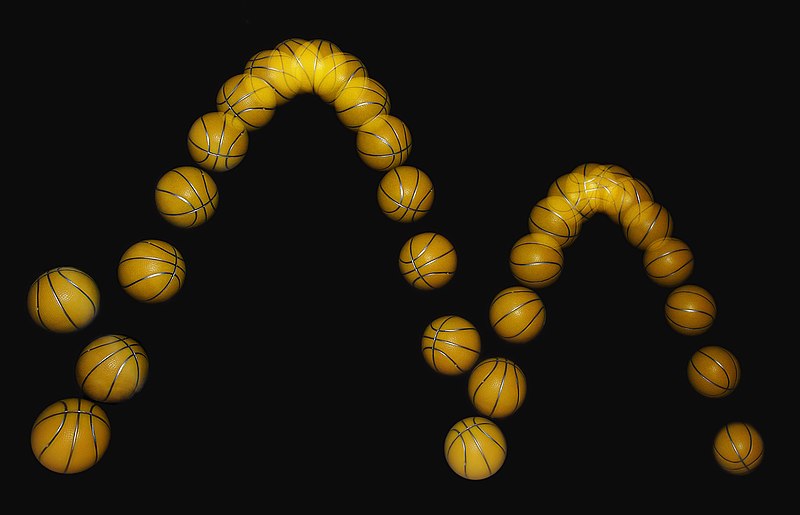Fitxategi:Bouncing ball strobe edit.jpg

Aurreikuspen honen neurria: 800 × 515 pixel. Bestelako bereizmenak: 320 × 206 pixel | 640 × 412 pixel | 1.024 × 659 pixel | 1.280 × 824 pixel | 1.800 × 1.159 pixel.
Bereizmen handikoa ((1.800 × 1.159 pixel, fitxategiaren tamaina: 293 KB, MIME mota: image/jpeg))
Fitxategiaren historia
Data/orduan klik egin fitxategiak orduan zuen itxura ikusteko.
| Data/Ordua | Iruditxoa | Neurriak | Erabiltzailea | Iruzkina | |
|---|---|---|---|---|---|
| oraingoa | 19:27, 8 urria 2007 |  | 1.800 × 1.159 (293 KB) | Richard Bartz | {{Information |Description=A bouncing ball captured with a stroboscopic flash at 25 images per second. Note that the ball becomes significantly non-spherical after each bounce, especially after the first. That, along with spin and air-resistance, causes |
Irudira dakarten loturak
Hurrengo orrialdeek dute fitxategi honetarako lotura:
Fitxategiaren erabilera orokorra
Hurrengo beste wikiek fitxategi hau darabilte:
- am.wikipedia.org proiektuan duen erabilera
- ar.wikipedia.org proiektuan duen erabilera
- az.wikipedia.org proiektuan duen erabilera
- ba.wikipedia.org proiektuan duen erabilera
- be.wikipedia.org proiektuan duen erabilera
- bjn.wikipedia.org proiektuan duen erabilera
- bn.wikipedia.org proiektuan duen erabilera
- ca.wikipedia.org proiektuan duen erabilera
- ca.wikibooks.org proiektuan duen erabilera
- ckb.wikipedia.org proiektuan duen erabilera
- cs.wikipedia.org proiektuan duen erabilera
- cv.wikipedia.org proiektuan duen erabilera
- da.wikipedia.org proiektuan duen erabilera
- de.wikipedia.org proiektuan duen erabilera
- de.wiktionary.org proiektuan duen erabilera
- en.wikipedia.org proiektuan duen erabilera
- Parabola
- Newton's laws of motion
- Inelastic collision
- Past
- Stroboscope
- Portal:Science
- Coefficient of restitution
- User talk:MichaelMaggs/Archive/2
- Wikipedia:Featured pictures thumbs/08
- Wikipedia:Featured picture candidates/October-2007
- User talk:MER-C/archives/19
- Wikipedia:Featured picture candidates/Projectile motion
- Wikipedia:Wikipedia Signpost/2007-10-22/Features and admins
- Portal:Physics/2008 Selected pictures
- Wikipedia:Featured pictures/Sciences/Others
- User talk:MER-C/archives/21
- Wikipedia:Picture of the day/February 2008
Ikus fitxategi honen erabilpen global gehiago.



